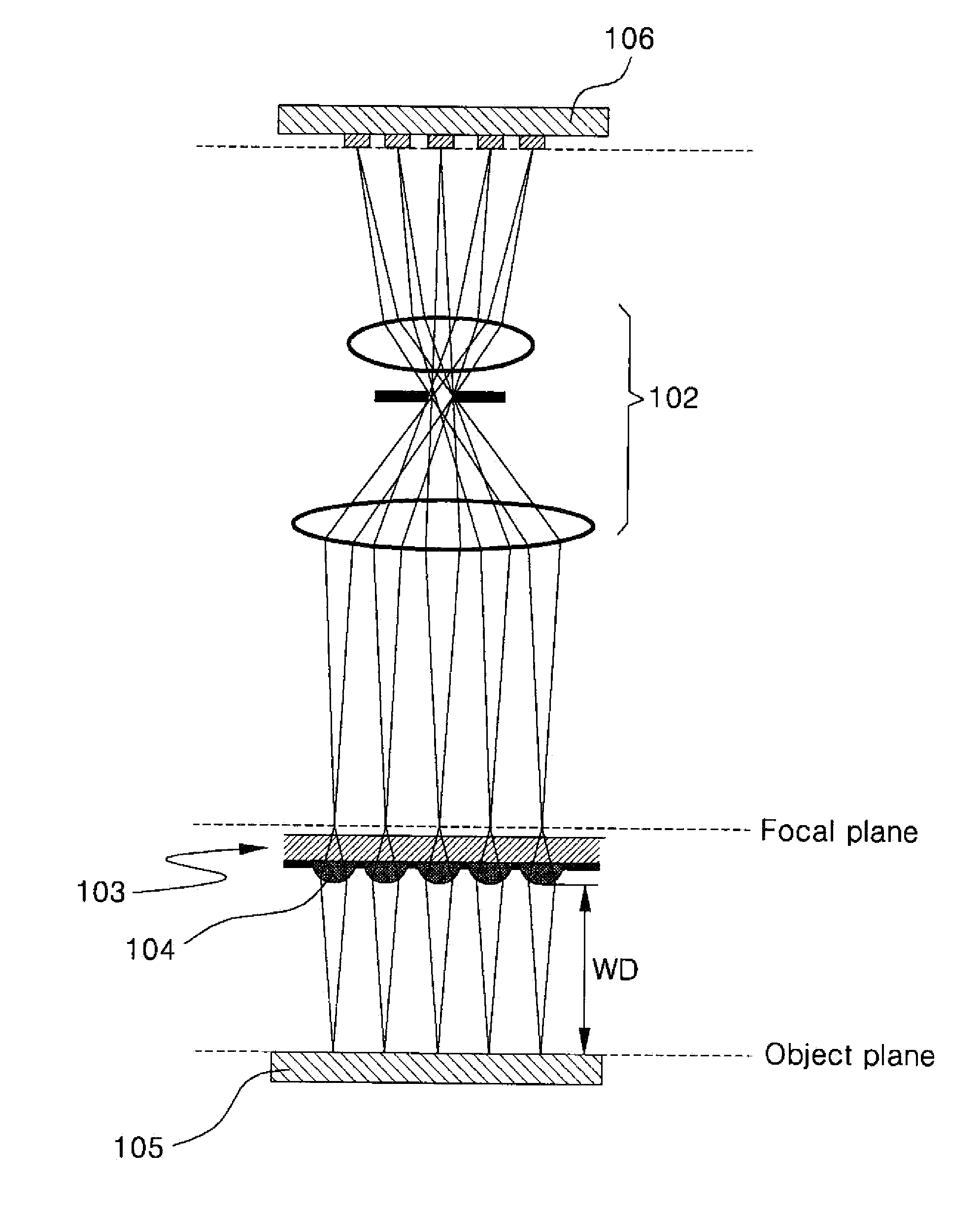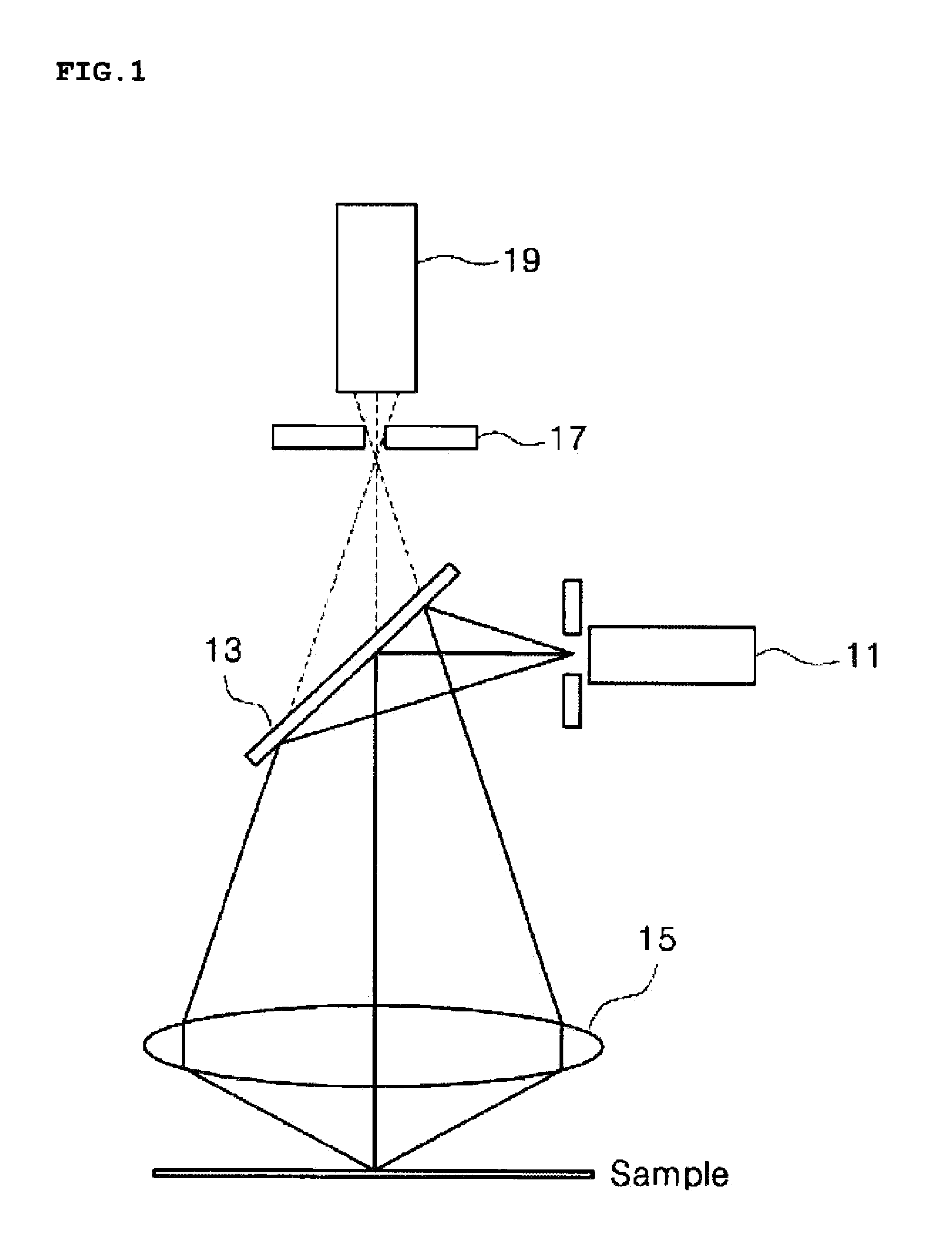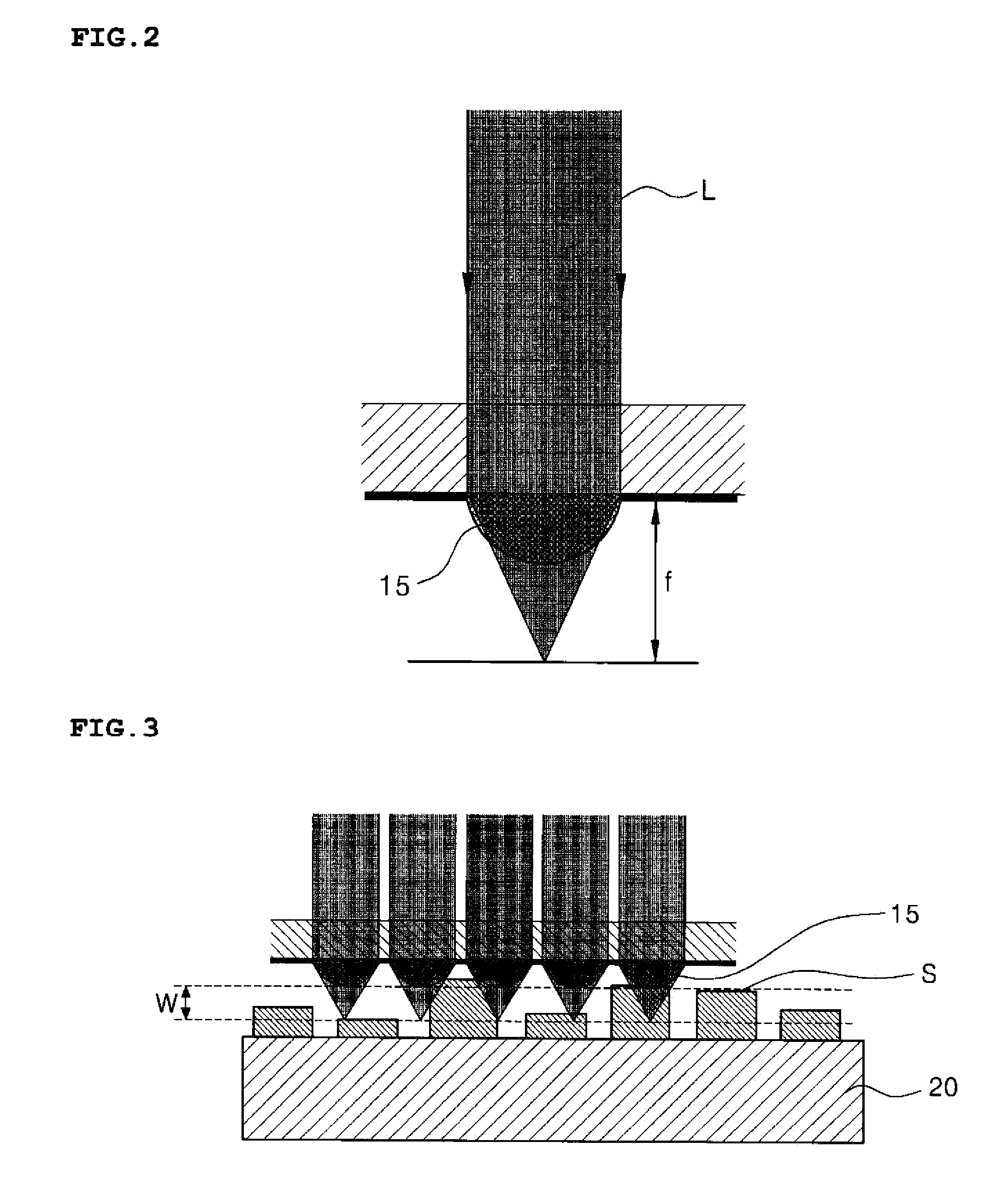Multiple parallel confocal system and surface measurement method using the same
a confocal system and confocal technology, applied in the field of multiple parallel confocal systems and surface measurement methods, can solve the problems of reducing the efficiency of quality inspection, requiring a substantially long period of time for measuring the large area, and difficult to measure a large area with a high resolution limit, so as to reduce the formation of contamination and scratches
- Summary
- Abstract
- Description
- Claims
- Application Information
AI Technical Summary
Benefits of technology
Problems solved by technology
Method used
Image
Examples
first embodiment
[0059]FIG. 7 is a concept view showing the configuration of a multiple parallel confocal system according to the present invention.
[0060]As shown in FIG. 7, a multiple parallel confocal system according to a first embodiment of the present invention includes: a light source (not shown) for irradiating light; a relay lens unit 102 through which the light traveling toward a measuring object 105 or the light reflected from the measuring object 105 is passed, the relay lens unit 102 having one or more lens for focusing the light irradiated from the light source; a multiple optical probe 103 having a microlens array on which a plurality of microlenses 104 is arranged, the microlenses 104 into which the focused light through the relay lens unit 102 is incident; and a photo detector 106 for detecting the incident light reflected from the measuring object 105 and passed through the microlenses 104 and the relay lens unit 102.
[0061]The relay lens unit 102 is an optical microscope for focusin...
second embodiment
[0070]FIG. 9 shows a multiple parallel confocal system according to the present invention, wherein the relay lens unit has a telecentric lens and a beam splitter.
[0071]As shown in FIG. 9, the relay lens unit 102 as the optical microscope for focusing the light includes: a telecentric lens 108 having two focusing lenses 108a and 108c and an aperture 108b disposed between the focusing lenses 108a and 108c; and a beam splitter 107 disposed under the optical axis of the telecentric lens 108 so as to convert the advancing paths of light irradiated from the light source.
[0072]At this time, as shown in FIG. 9, the light source is disposed under the optical axis of the telecentric lens 108, and alternatively, it is disposed above the optical axis of the telecentric lens 108. In this case, if the light source is disposed above the optical axis of the telecentric lens 108, the beam splitter 107 is disposed above the telecentric lens 108.
third embodiment
[0073]On the other hand, FIG. 10 shows a multiple parallel confocal system according to the present invention, wherein an aperture 140 having pin holes 142 formed thereon is additionally disposed on a focal plane where the focuses of the relay lens unit 102 and the back focuses of the microlenses 104 meet.
[0074]FIG. 11 is a concept view showing the checking state of the surface of the measuring object using the confocal system according to the present invention. As shown in FIG. 11, if the measuring object 105 is measured by using the confocal system according to the present invention which has the working distance WD longer than the existing focal length f of the microlens, the surface of the measuring object 105 can be scanned without any contact with the microlenses 104, thus preventing the surfaces of the microlenses 104 and the measuring object 105 from being contaminated or scratched due to the contact therebetween. Furthermore, the existing confocal system needs a separate de...
PUM
| Property | Measurement | Unit |
|---|---|---|
| focal distance | aaaaa | aaaaa |
| optical axis | aaaaa | aaaaa |
| distance | aaaaa | aaaaa |
Abstract
Description
Claims
Application Information
 Login to View More
Login to View More - R&D
- Intellectual Property
- Life Sciences
- Materials
- Tech Scout
- Unparalleled Data Quality
- Higher Quality Content
- 60% Fewer Hallucinations
Browse by: Latest US Patents, China's latest patents, Technical Efficacy Thesaurus, Application Domain, Technology Topic, Popular Technical Reports.
© 2025 PatSnap. All rights reserved.Legal|Privacy policy|Modern Slavery Act Transparency Statement|Sitemap|About US| Contact US: help@patsnap.com



